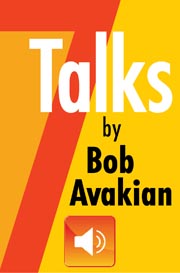Letter from a Reader:
Tackle Football “Can’t Be Saved”: Early Retirements Keep the Focus on Concussions in Football
September 21, 2015 | Revolution Newspaper | revcom.us
As Adrian Coxson lay prone on the football field, his Stony Brook University teammates jogged by his motionless body on the way to their locker room at halftime of the final game of the season last year. A few seconds before, Coxson had leaped high in the air to catch a pass, when he was hit very hard in the neck by an Albany player. Coxson did not play in the remainder of the game because of a serious concussion, but he was declared “perfectly healthy” later on.
Coxson, considered a promising future pro player, was not drafted by the NFL (National Football League) this year and was trying out for the Green Bay Packers team. On the third day of practice early last month, he felt fatigued and light-headed and was taken from the field in an ambulance. Coxson was diagnosed at the hospital with a grade 3 (severe) concussion. After being released by the Packers, Coxson announced that he was retiring permanently from football saying, “I’m retiring because I’m still having symptoms and my health is more important to me than the game of football... The next hit to my head could possibly kill me or be life damaging... I take pride in being able to function now from this injury. I’m concerned about how healthy I am and I want to get to as close to 100 percent as I can get. I’m concerned about the outcome of this whole injury. It was a bad one.”
Coxson is one of many players who are now leaving football and all the money behind in order to remain healthy. Coxson and these other players are on the forefront of those who are acting on their understanding that an increasing number of retired NFL players have suffered concussions and developed memory and cognitive issues such as dementia, Alzheimer’s disease, depression, and chronic traumatic encephalopathy (CTE).1
The most notable of these is 24-year-old Chris Borland, who played for the NFL’s San Francisco 49ers. Borland was one of the top rookies in the league last year and was named Rookie of the Week for two weeks in a row. Borland’s early retirement shocked the NFL, and his statements about it sent shivers through the NFL offices—the professional football league that has continually tried to minimize, suppress, and cover up the effects of concussions and brain trauma on its players.2
“I just honestly want to do what is best for my health,” Borland said. “From what I’ve researched and what I’ve experienced, I don’t think it is worth the risk. I’m concerned that if you wait [until] you have symptoms, it’s too late.” Later, during a visit to the Boston School of Medicine, where football brain injuries are studied, Borland concluded that he may have had 30 concussions since childhood. Borland focused on three players who died of CTE due to brain concussions—Mike Webster, Dave Duerson, and Ray Easterling—that made him rethink about life in football (see box below: “Some of the Former Athletes Diagnosed with CTE”). Borland went on to say that he will not coach football and has trouble watching football.
Then Borland dropped the “bombshell” that the NFL did not want to hear when, at the National Summit on Sports Concussion in Los Angeles, he told the audience that based on his experience, he “couldn’t play football safely” and believed that “football can’t be saved.” (It seems clear that Chris Borland was not talking about touch or flag football but about tackle football as played in high school, college, and the professional leagues.)
Borland’s retirement prompted others to follow him. Jack Miller, an offensive lineman for the University of Michigan, decided to forgo his final year due to concerns over concussions. Miller said, “I’d be lying if I said the concussion thing doesn’t scare me a little.” Borland’s former 49er teammate Anthony Davis said he was taking a leave of absence from football “to allow my brain and body a chance to heal.”
Others who are retiring at an early age this year are Jason Worilds, 27-year-old Pittsburgh Steelers linebacker; Tennessee Titans quarterback Jake Locker (age 26); Jacksonville Jaguars running back Maurice Jones-Drew (age 29); Pro Bowl linebacker Patrick Willis of the 49ers (age 30); and another 49er, Justin Smith (age 35). Although these players did not specifically cite concussions as the reason, several said that they were leaving early for health reasons. Willis said, “Honestly, I pay attention to guys when they are finished playing, walking around like they’ve got no hips and they can’t play with their kids. They can barely walk.” Several sports writers have commented that the current situation of some players leaving for fear of damaging their brain if they continued to play may have played into these other players deciding to retire early.
These early retirements have caught the NFL and people who pay attention to football by surprise because players stepping away for health reasons and forgoing future lucrative contracts has been unheard of in the past and goes against the dominant player culture in the NFL to “be a man and play with pain.” As Andrew Brandt, a former agent and former team executive put it, “The vast majority of NFL players—no matter what age—don’t retire voluntarily; the are ‘retired’ by teams that no longer need their services. Often when we see players retire a month or two into free agency [when they are free to sign a contract with any team in the league], it’s because no team is willing to ‘un-retire’ them so they can continue playing.”
Much of the previous discussion of brain injuries in the NFL was centered on the massive concussion suit against the NFL by hundreds of former players. The NFL settled the suit by paying a paltry amount to these players while the league avoided billions of dollars of negative exposure and having to admit any liability for the players’ brain trauma, and could claim that they were taking care of their former players to some degree. “However,” as Andrew Brandt commented, “when players in the prime of their careers decide the risk is not worth the reward, that is an entirely different conversation, one the NFL does not want to have.”
But the real conversation that the NFL and those who run this country do not want to have is the conversation that should be had that tackle football “can’t be saved.” You have to dig very deep to grasp the truth of Chris Borland’s statement. You have to understand that tweaking tackle football as it is—better equipment, better concussion protocols, improved tackling techniques, and penalties, fines, and suspensions for serious head hits—may reduce some concussions, but will not eliminate them and certainly will do nothing to stop the sub-concussive hits to the head that players receive that contribute to CTE. Harry Cheatle, writing for vice.com, put it this way: “The NFL says that ‘football has never been safer,’ but that’s some chickenshit moral calculus—am I supposed to feel good that the players I’m watching are suffering a lower rate of brain damage than before?”
When you dig deep, you have to understand that football provides this capitalist system and the social relations under this system with much more than just being a game or a business—football promotes a culture that is in line with what is necessary to keep this rotten and putrid system continuing as it is. As a reader wrote in a letter, “The Outrage Over Pro Football Bullying: A ‘Guy Culture’ of Rape, Racism, and Violence“:
Football culture is a concentration of and promotes the kind of values associated with this society. Men across society are taught and trained from an early age to “man up.” Bob Avakian, in his interview with A. Brooks, was asked about the arena of art and culture. He says, “...in an overall and ultimate sense, art and culture does give expression to one worldview or another, and it does become part of the arena of ideological and ultimately political struggle, even where it is given a lot of rein to go in a lot of different directions and is not so directly tied to political and ideological struggle.” He goes on: “...football certainly does have a major influence, particularly on guys and ‘guy culture’—which is not a healthy culture—it’s a male chauvinist culture, for short, which incorporates the celebration of violence, real as well as ritualized violence.” (Bob Avakian, What Humanity Needs—Revolution, and the New Synthesis of Communism)
So, I say kudos and cheers to those players who are quitting the game and continuing to shine the light on the pain and suffering of those who play it and who, through their actions, are keeping the horrors of the effects of concussions as one of the most important discussions we should be having about the NFL and football in general.
Yes, Chris Borland, tackle football can’t be saved and that’s a very important discovery. Any thinking that it could be saved would keep you confined within the system of capitalism-imperialism. We need to get beyond football as we know it today, and that means we need to get beyond the capitalist-imperialist system.
1. Chronic Traumatic Encephalopathy (CTE) is a progressive degenerative disease of the brain found in athletes (and others) with a history of repetitive brain trauma, including symptomatic concussions as well as asymptomatic subconcussive hits to the head. CTE has been known to affect boxers since the 1920s. However, recent reports have been published showing neuropathologically confirmed CTE in retired professional football players and other athletes who have a history of repetitive brain trauma. This trauma triggers progressive degeneration of the brain tissue, including the build-up of an abnormal protein called tau. These changes in the brain can begin months, years, or even decades after the last brain trauma or end of active athletic involvement. The brain degeneration is associated with memory loss, confusion, impaired judgment, impulse control problems, aggression, depression, and, eventually, progressive dementia. (Boston University Center for the Study of Traumatic Encephalopathy) [back]
2. Revolution has previously reported on concussions in football and the NFL’s attempts to downplay the seriousness of this injury. See “NFL Concussion Settlement: $765 Million to Suppress the Truth About Brain Injuries, Revolution 316, September 15, 2013, and “League of Denial is a League of Criminals—The Outrageous Brain Injury Cover-Up of the National Football League, Revolution 320, October 14, 2013. [back]
Volunteers Needed... for revcom.us and Revolution
If you like this article, subscribe, donate to and sustain Revolution newspaper.


 Bob Avakian:
Bob Avakian:




